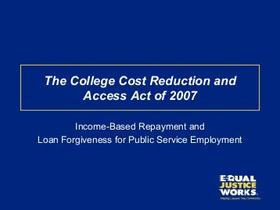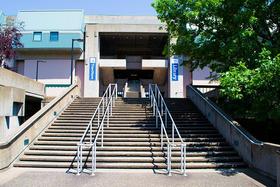The face of the community college student appears to be changing in more ways than one, as a slow economy and skyrocketing tuition rates at four-year schools have begun to take their toll. A recent study by student loan provider Sallie Mae found that more students from high-income families are moving to community college right out of high school, thanks to lower tuition costs and better career options. It also seems that the attitude toward community college education is improving as more students see this path as a viable option for a bright future.
The Changing Demographic
The report on the Sallie Mae website, “How America Pays for College 2011,” explains that in the past four years, many families across the country and from all income brackets have shifted from four-year institutions to two-year community colleges. This shift could be a factor in why middle- and high-income families have been able to reduce education costs and take less money from income and savings to pay the price for higher education.
The study found that during the 2009-2010 academic year, 12 percent of high-income families (families making $100,000 or more) sent students to two-year colleges. The following school year, that percentage went up to 22 percent. That increase correlates with a drop in four-year college enrollment during the same time frame, which shifted from 56 percent during the 2009-2010 school year to just 48 percent the following year. This group also reported paying 18 percent less for college during that period, dropping to an average of $25,760 this year after paying an average of $31,245 last year.
This video offers an overview of Wake Tech Community College in Raleigh, North Carolina.
Reasons for the Shift
There are many possible reasons for this demographic's increased community college enrollment. According to a report at Inside Higher Ed, one factor might be a more accepted view of community college education in general.
“Community college gradually is gaining wider acceptance as the default option out of high school,” Stephen G. Katsinas, director of the University of Alabama’s Education Policy Center, told Inside Higher Ed.
James Jacobs, president of Macomb Community College in Michigan, agrees. Macomb told Inside Higher Ed, “You have more students coming to our campuses who see themselves transferring.” The community college has become a stepping stone to a complete higher education.
Another factor that could play a role is the cost of tuition, which has been steadily increasing at many four-year schools nationwide. The New York Times reports that students attending community college pay significantly less in tuition, and it is easier for them to live at home and attend classes. The New York Times also stated that students from more affluent backgrounds are looking for a rich campus experience with updated facilities. In recent years, many community colleges have fit the bill with renovations, expansions, and additions to their degree program options.
Still, another factor could be the push by the White House to portray community college as a cost-effective approach to higher education. Campus Progress reports that just last week, Dr. Jill Biden and Secretary of Labor Hilda Solis launched a five-state bus tour to promote partnerships between community colleges and businesses. President Obama also recently announced plans for his Community College Career Fund, which is an $8 billion initiative to train two million community college students in specific careers.
This video offers a look at Suffolk County Community College on Long Island, New York.
Economic Concerns do Not Play a Role
One factor that has contributed to increasing community college enrollment in recent years, economic woes, does not appear to play a major role in the recent Sallie Mae study. Campus Progress cites the following quote from the report by the lending organization:
"In 2011, for the first time since the study began, parents’ economic worries appear to decline. In previous years, parents’ worries about economic conditions increased year-over-year, with much of this concern focused on increasing tuition, loan rates, and the availability of loan and grant money to pay for college. While the prospect that schools will increase tuition and that grants and scholarships will be less available remain the highest concerns with parents, the 2011 survey shows an overall decline in economic worry in general."
Families in the high-income bracket expressed less concern about the economy than families from the middle- and low-income brackets.
Profile of the Affluent Student
The increase in students from high-income families can pose advantages and disadvantages for community colleges. Overall, students from affluent families tend to be poised for a successful college experience, with better academic performance and a greater likelihood of earning a degree. These students are also more apt to attend school full-time, and they require fewer remediation classes and special services than other community college students.
By the same token, students from affluent backgrounds can also have higher expectations for the community college experience. They may want more extracurricular opportunities and campus amenities like fitness centers. They may also be more likely to use community college counseling services. These expectations can be difficult for budget-stretched community colleges to accommodate.
The Value of a College Degree
The Sallie Mae study also found that parents and students are placing a higher economic value on a college education. The report states that 90 percent of students surveyed believe college is “an investment in the future,” up from just 84 percent the year before. More than seven in 10 students agree that a college education is essential for a student’s desired occupation and that college is an important factor in earning a higher income. These numbers are also up from the previous year. However, fewer students and parents believe that a college education is essential for “achieving the American dream.”
Demographics at community colleges always appear to be shifting, and the tilt towards wealthier students is a trend that appears to be growing around our country.
Questions? Contact us on Facebook. @communitycollegereview















